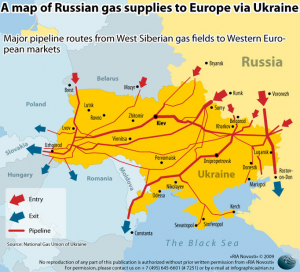US-Russia Round Three: Macedonia
IN FOCUS, 18 May 2015
Andrew Korybko – Oriental Review
 15 May 2015 – The US and Russia are currently involved in heated competition amidst the New Cold War, with their latest rivalry threatening to turn hot over Macedonia. They had already duked it out over Ukraine (and still are, to a large extent), and a deadly stalemate has now settled over Syria as the US covert war on the country drags through its fourth year. The latest flare-up between the two Great Powers is now gearing up to be for Macedonia, with the US following the template it’s learned in the previous two cases to throw the country into chaos during the forthcoming 17 May Color Revolution offensive. The terrorists intercepted last weekend in Kumanovo were supposed to have coordinated their attacks with the Color Revolutionaries during this Sunday’s destabilization, which would have symbolized the strategic merger between the Color Revolution and Unconventional War elements of the US’ regime change toolkit. With all eyes on Macedonia to see what will happen this Sunday, it’s worth recalling the previous two rounds of their confrontation in better understanding how Round Three represents the seamless continuation of their New Cold War rivalry.
15 May 2015 – The US and Russia are currently involved in heated competition amidst the New Cold War, with their latest rivalry threatening to turn hot over Macedonia. They had already duked it out over Ukraine (and still are, to a large extent), and a deadly stalemate has now settled over Syria as the US covert war on the country drags through its fourth year. The latest flare-up between the two Great Powers is now gearing up to be for Macedonia, with the US following the template it’s learned in the previous two cases to throw the country into chaos during the forthcoming 17 May Color Revolution offensive. The terrorists intercepted last weekend in Kumanovo were supposed to have coordinated their attacks with the Color Revolutionaries during this Sunday’s destabilization, which would have symbolized the strategic merger between the Color Revolution and Unconventional War elements of the US’ regime change toolkit. With all eyes on Macedonia to see what will happen this Sunday, it’s worth recalling the previous two rounds of their confrontation in better understanding how Round Three represents the seamless continuation of their New Cold War rivalry.
Same Scenario, Different States
What’s occurring in Macedonia is incontestably the continuation of tried-and-tested American destabilization tactics, and it follows the exact same scenario as what occurred in Syria and Ukraine before it.
Theme:
The underlying theme connecting Syria, Ukraine, and now Macedonia is that they’re proxy wars between the US and Russia, with Washington playing the destructive offensive role while Russia holds the stabilizing defense. To explain, the US strives to force regime change on those targeted states, while Russia actively works to reinforce their governments in resisting the attack. Russian-Ukrainian and Russian-Syrian strategic collaboration during their regime change crisis is well-known, but in the case of Russian-Macedonian relations, ties are much more sensitive and lurk mostly in the shadows. Due to Macedonia’s ‘official’ policy of wanting to join NATO and the EU, its government and intelligence services cannot be publicly associated in cooperating with their Russian counterparts, hence why such relationships are kept in the shadows.
While one may doubt whether such ties exist, they can only help but wonder whether Russian intelligence helped expose the massive wiretapping coup attempt to the Macedonian government, especially since adroit foreign (read: Western) intelligence is to blame for the conspiracy. Additionally, the appointment of an alumni from the Moscow State Institute of International Relations as the Macedonian Ambassador to Russia speaks loudly about Skopje’s intention to deepen ties with Moscow. On top of that, Russia supported Macedonia when the Gosince terrorist test-run occurred and later voiced strong condemnation of the Kumanovo terrorist attack and Zaev’s Color Revolution attempt. Macedonia was also one of the few European countries to send its President to Moscow to attend the Victory Day celebrations and not enact sanctions against Russia, and during the visit of Gjorge Ivanov to the Russian capital, he had the honor in meeting with Patriarch Kirill, a privilege typically reserved for important Russian partners. Taken together, one can see that Russia has rapidly cultivated influence with the Macedonian state as part of its larger Balkan Stream plans, and it should be taken as a given that intelligence collaboration and counter-Color Revolution support is also involved.
Pattern:
The US has patterned a distinct template of regime change that’s visibly discernable in Macedonia, after having of course been perfected in Syria and Ukraine first. When a country is targeted for asymmetrical attack, the US deploys a Color Revolution attempt in order to promote ‘soft’ destabilization (which as can be seen from the Syrian and EuroMaidan innovations, actually involves quite a lot of bloodshed). Should this tactic fail to dislodge the democratically elected and legitimate government, then the US begins pursuing an Unconventional War (terrorism and insurgency) to pile on the pressure and hope that it’s enough to topple the authorities. The final scenario in all cases is to provoke a conventional military intervention if the previous two regime change attempts are unsuccessful, although such a force is nowadays expected to be disguised as a ‘humanitarian intervention’/’responsibility to protect’/’anti-terrorism’ operation.
The US succeeded in overthrowing Ukraine’s government with a Color Revolution, but this didn’t come to pass in Syria, hence the escalation to an Unconventional War. The same thing is happening in Macedonia right now, even down to the ISIL-trained fighters. The Color Revolution is flailing, ergo why it’s morphing into an Unconventional War. The US has purposely resurrected one of the most dangerous terrorist groups in the Balkans, the Kosovo Liberation Army, in order to incite ethnic divisions between Albanian and Slavic Macedonians and facilitate its regime change plans. At the same time, however, it’s taking a somewhat novel approach by keeping the Color Revolution on life support and attempting to integrate it into the Unconventional War.
The strategy here is to apply dual mechanisms of pressure that can engage in ‘friendly competition’ with one another in seeing which can overthrow the government first. The only reason that this concept is even considered and that the Color Revolution hasn’t totally fizzled out by this time is because it’s gained some support from dissatisfied youth groups who have been manipulated into joining the anti-government protests. With the Color Revolution kept alive by a collection of youth and their heavily publicized tweets and protests, and the Unconventional War dependent on terrorism, the regime change operations’ social foundations are extremely weak, yet they have the potential for massive expansion if the 17 May destabilization events can gather more adults and Albanians (either through enticement or provocation).
Scorecard:
In preparation for the ‘next round’, let’s take stock of where the two contenders stand thus far:
* 2011-Present: Syria
The US began a local Color Revolution in Syria along the lines of the regional theater-wide one code-named the ‘Arab Spring’. After being resolutely defeated by the patriotic population, it transformed on command to an Unconventional War directly supported by the country’s treacherous Turkish, Israeli, and Jordanian neighbors. Right now the situation is at a standstill as the US and its allies pump more terrorists, guns, and money into the conflict and Russia continues equipping its decades-long Syrian ally in fighting back against the aggression.
* 2013-2014: Ukraine
Like in Syria, the US began a Color Revolution in Ukraine against the government, but this one was a lot more successful. Within a few months, it toppled the government and swept to power in Kiev, representing a symbolic American victory against Russian interests. However, the subsequent reunification with Crimea and civil war over Donbass makes one question whether or not this was a pyrrhic victory for Washington, and the final verdict has yet to be handed down.
* 2015-Present: Macedonia
Following its template, the US began with a Color Revolution and is now calling up its Unconventional War cavaliers to enact a hybrid regime change push against the government. Russia has made large strides in expanding its partnership with Macedonia in recent months, but the most fruitful portion of their interactions focusing on the intelligence services and counter-Color Revolution strategies will likely never be able to be fully assessed. Right now, all sides are racing to position themselves in anticipation of 17 May when the Color Revolutionaries and Unconventional Warriors prepare to face-off against the government and its citizens, in a date that will ‘formalize’ Round Three in the US-Russian geopolitical New Cold War.
From Energy Wars To Hot Wars
All three of the geopolitical conflicts in the New Cold War are intertwined with the US’ energy strategy in Eurasia and Washington’s will to dominate key transit routes in the supercontinent:
Syria:
President Bashar Assad had agreed to create the Friendship Pipeline with Iran and Iraq in order to transport Gulf gas to the burgeoning EU market. This clashed with Qatar and Saudi Arabia’s plans for a rival pipeline to go through Jordan and Syria and support the EU with their own non-Iranian resources. After President Assad rejected the Gulf Monarchies in favor of his long-standing Iranian allies, the decision was made to overthrow his government and the Color Revolution and related Unconventional War were launched a few years later after the supportive infrastructure had been established. As of now, the Friendship Pipeline hasn’t been built and the plethora of challenges physically standing in its way might mean that it likely won’t be any time soon. This in turn keeps the EU within the US’ unipolar sphere of influence since Washington prevented a major multipolar energy source from directly exporting to its proxy bloc. The next step was thus to neutralize the only non-American-controlled supplier feeding the EU, Russia, by hijacking one of its most important geostrategic routes and placing it under the US’ control.
Ukraine:
 In this battle, the US maneuvered to gain control over critical pipelines traversing Ukraine’s territory, knowing that this would put it in a position of influence over both the EU and Russia; the former would be dependent on an American proxy for supplies, while enormous amounts of the latter’s budget revenue reaped through the said pipelines would immediately fall under American geopolitical influence. While the US did succeed in gaining control of Ukraine’s geostrategic transit area and scuttling South Stream, it didn’t anticipate that Russia would counter these moves with Turkish/Balkan Stream and mandate that all Ukrainian-destined energy exports be discontinued by 2019. In one grand move, Russia reversed the US’ geo-energy (but not the geo-military) successes from its coup in Kiev.
In this battle, the US maneuvered to gain control over critical pipelines traversing Ukraine’s territory, knowing that this would put it in a position of influence over both the EU and Russia; the former would be dependent on an American proxy for supplies, while enormous amounts of the latter’s budget revenue reaped through the said pipelines would immediately fall under American geopolitical influence. While the US did succeed in gaining control of Ukraine’s geostrategic transit area and scuttling South Stream, it didn’t anticipate that Russia would counter these moves with Turkish/Balkan Stream and mandate that all Ukrainian-destined energy exports be discontinued by 2019. In one grand move, Russia reversed the US’ geo-energy (but not the geo-military) successes from its coup in Kiev.
Macedonia:
As a direct consequence of the US’ War on Ukraine and Russia’s Turkish/Balkan Stream countermeasures, the War on Macedonia has begun. The US is adamant about destroying Turkish/Balkan Stream, seeing its very existence as a slight to America’s strategic calculations and ‘success’ in Ukraine. On top of that, it wants to do whatever it can to prevent Russian influence from taking hold in the Balkans via the pipeline plans, fearing that such a development could trigger a ‘multipolar coup’ in the EU’s strategically vulnerable backdoor region. Geopolitics dictate that Macedonia is the chokepoint for any North-South integration through the Balkans, hence the frenzied competition between the US and Russia over its stability and strategic trajectory. The future of the Balkans quite literally runs through Macedonia, and its disposition towards either the unipolar or multipolar world will have continental-wide reverberations and directly influence the nature of US-EU and EU-Russian relations.
The Never-Ending Struggle
All conflicts in Eurasia essentially come down to being between the Exceptionalists and the Integrationalists, with the examined context finding the former represented by Greater Albania and the latter by the Balkan Stream countries. Russia is preparing to use the pipeline as a springboard for intensifying full spectrum cooperation with all the countries along its route, thereby meaning that Balkan Stream is more than just a piece of physical energy infrastructure, but is instead an attractive alternative to haphazard EU integration and a magnet for multipolarity. Moscow’s refreshing recognition of its partners’ sovereignty and independence sets it apart from Washington and Brussels, hence why it’s gaining such wide support in the region over such a short period of time. Faced with such a surging and well-received competitor, the unipolar world decided to sabotage its rival by finally activating the ticking time bomb of Greater Albania, which would throw the region into chaos and disrupt the multipolar integration taking place beyond its control.
This template – a multipolar anchor pursuing independent integrational projects that contravene the existing unipolar order – is being repeated all across Eurasia by Russia, China, and Iran: Moscow is pursuing the Balkan Stream and Eurasian Union; Tehran attempted to build the Friendship Pipeline, wants to build a pipeline to India, and is now in the process of constructing a Chinese-financed pipeline to Pakistan; and China is pursuing the Silk Road Economic Belt and Maritime Road. The combined pan-Eurasian scope of these three multipolar anchors’ integrational projects means that there’s scarcely any place in the supercontinent that isn’t a potential battleground between the Exceptionalists and the Integrationalists. As such, due to the convergence of interests between Russia, China, and Iran in reinforcing Eurasian stability as the most solid guarantee of facilitating their grand integrational strategies, these three civilization-states must absolutely intensify their trilateral relations and cooperatively work together in helping one another actualize their plans. A unified full-spectrum framework of assistance to each of their partner states presents the most surefire method in guaranteeing their security and counteracting any conventional and asymmetrical destabilizations that the unipolar world bears upon them in wrath.
Concluding Thoughts
The unipolar and multipolar worlds are once more clashing in Eurasia, this time in the tiny Balkan country of Macedonia. A major proxy war is unfolding between the US and Russia over this geostrategic state, and it’s following the exact same patterns of the previous conflicts in Syria and Ukraine. As with the prior two, the US once more wants to gain control of a key energy route and preempt it from becoming a platform for multipolarity, and it’s resorting to a Color Revolution and Unconventional War to attain its objective. Russia, on the other hand, is again on the defensive, once more indirectly supporting a beleaguered partner in surviving the unipolar onslaught. Everything is coming to a head on 17 May when the Color Revolutionaries/Unconventional Warriors have planned their next regime change push, and it’s up to Macedonians and their government (with Russian intelligence and strategic guidance) to repulse the aggressors and protect their homeland from destruction. Given the enormous long-term strategic stakes involved (liberating Europe with multipolarity or keeping it shackled in unipolarity), the Third Round of the US-Russian geopolitical confrontation might be its most climactic one yet.
______________________________
Andrew Korybko is an American political analyst and journalist for Sputnik currently living and studying in Moscow.
Go to Original – orientalreview.org
DISCLAIMER: The statements, views and opinions expressed in pieces republished here are solely those of the authors and do not necessarily represent those of TMS. In accordance with title 17 U.S.C. section 107, this material is distributed without profit to those who have expressed a prior interest in receiving the included information for research and educational purposes. TMS has no affiliation whatsoever with the originator of this article nor is TMS endorsed or sponsored by the originator. “GO TO ORIGINAL” links are provided as a convenience to our readers and allow for verification of authenticity. However, as originating pages are often updated by their originating host sites, the versions posted may not match the versions our readers view when clicking the “GO TO ORIGINAL” links. This site contains copyrighted material the use of which has not always been specifically authorized by the copyright owner. We are making such material available in our efforts to advance understanding of environmental, political, human rights, economic, democracy, scientific, and social justice issues, etc. We believe this constitutes a ‘fair use’ of any such copyrighted material as provided for in section 107 of the US Copyright Law. In accordance with Title 17 U.S.C. Section 107, the material on this site is distributed without profit to those who have expressed a prior interest in receiving the included information for research and educational purposes. For more information go to: http://www.law.cornell.edu/uscode/17/107.shtml. If you wish to use copyrighted material from this site for purposes of your own that go beyond ‘fair use’, you must obtain permission from the copyright owner.
